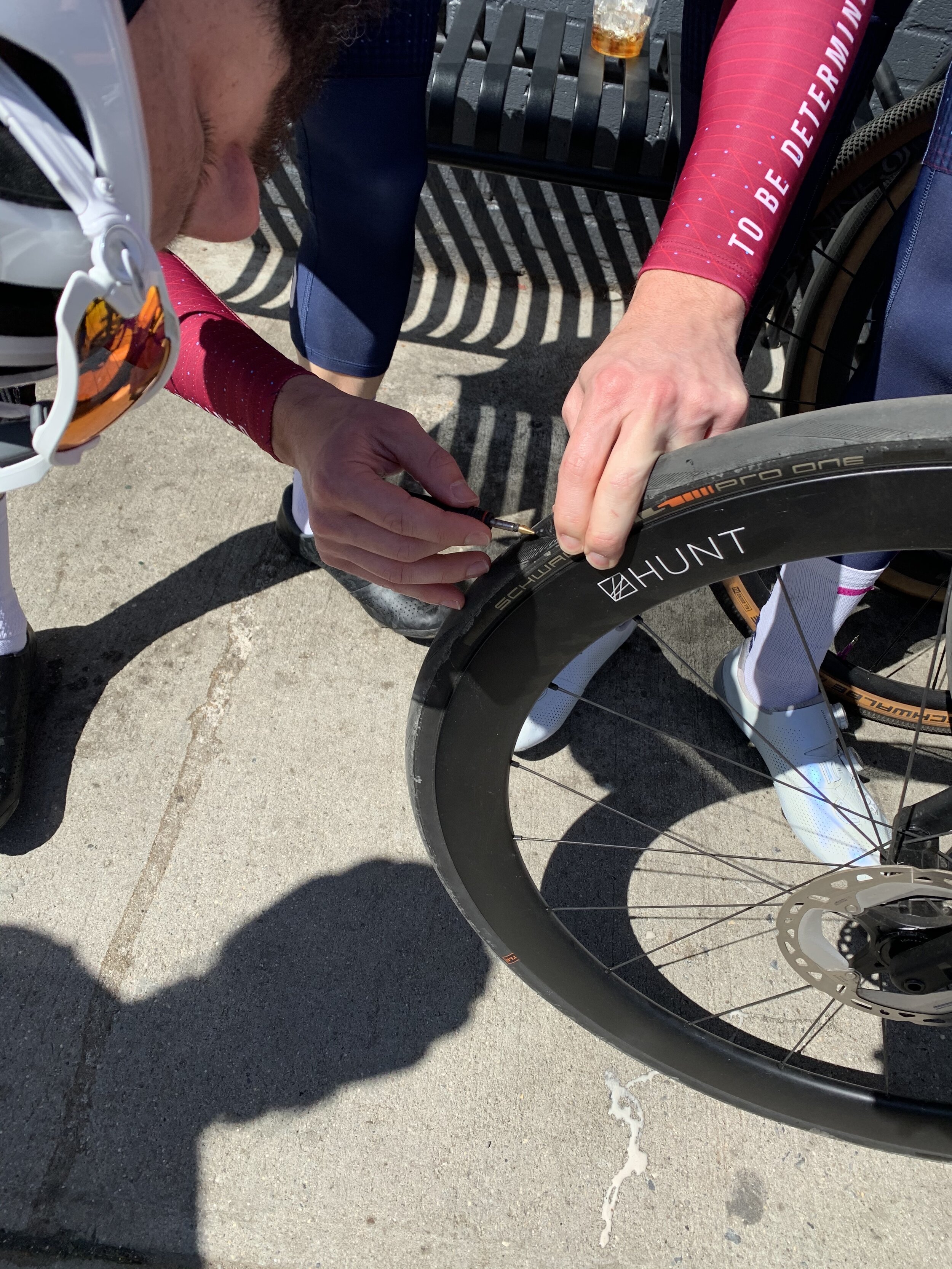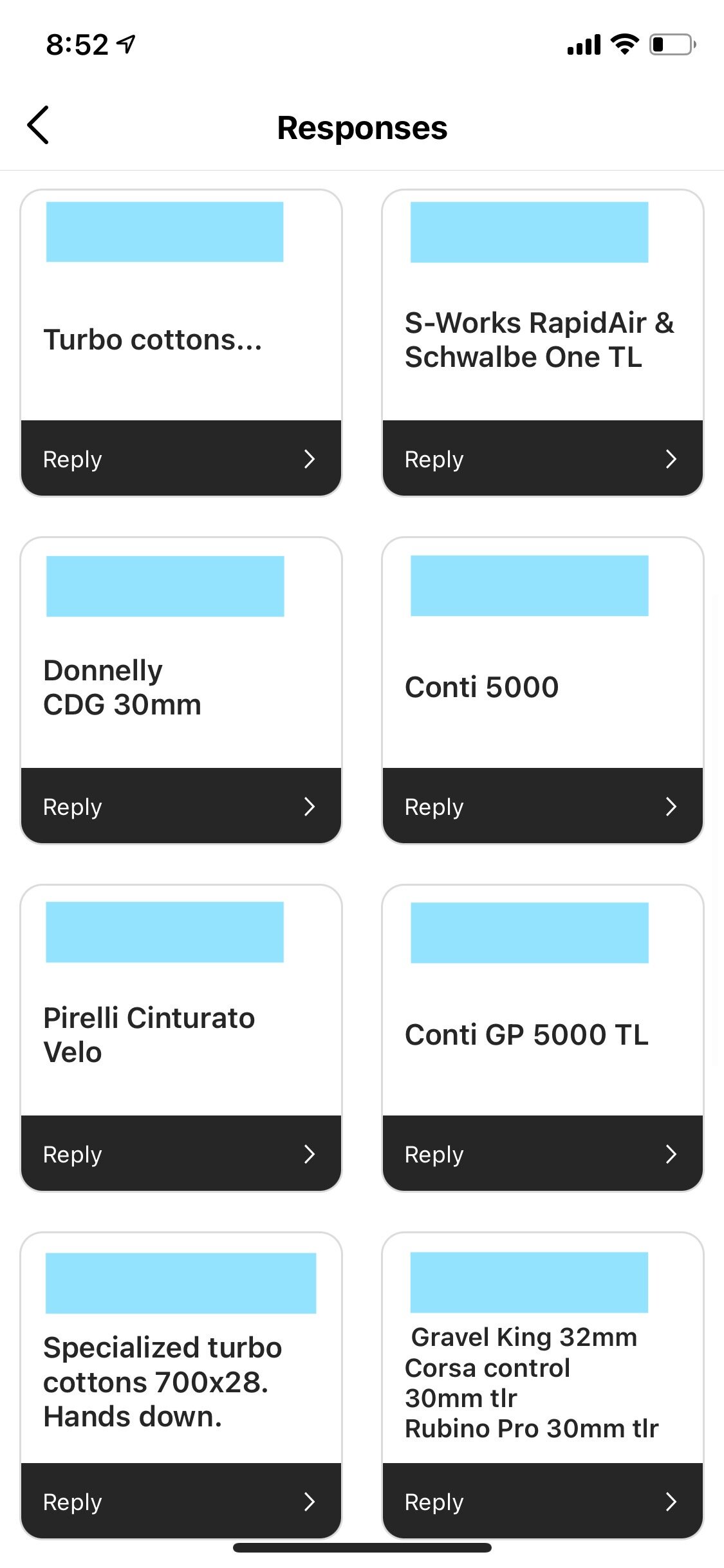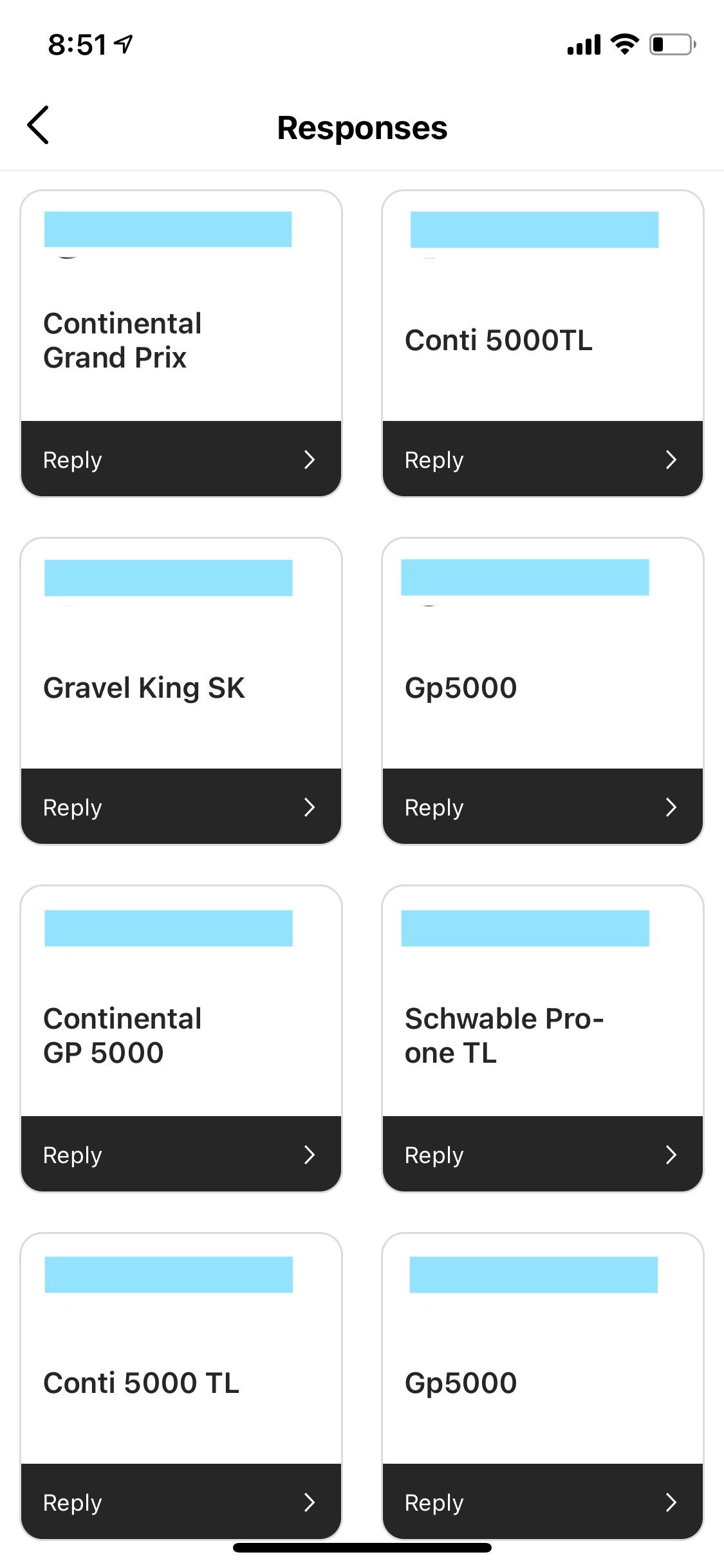One Year With Tubeless Tires: Are They Worth It?
I can tell you exactly where I was when I decided I would finally swap to tubeless tires: sitting in a traffic circle in the middle of River Road, stuffing my very flat tire full of grass and dried leaves. I did not think the ride would go this way. I’d left my house that morning nervous but cautiously optimistic, ready to ride over the bridge for the first time since covid lockdown had started six weeks earlier. My bar bag was full of snacks, an extra mask, some tools, and one extra tube. The roads were blissfully empty. I breezed through SoHo and up the West Side Highway with barely a car in sight. Crossing over the GWB and turning onto River Road, I started to feel a tiny bit of stress and anxiety melt away. The trees! The water! The fresh outdoor air, which I’d forgotten was a thing!
But as the reigning queen of flats, I should have known it was all too good to last. Sure enough, halfway to Alpine I double flatted. The fact that I’d only brought one extra tube was starting to feel like a poor decision. It is also important to note that I have 650B wheels, so even if I wasn’t afraid of flagging down a passing rider and catching covid (strangers in close proximity were extremely frightening in May 2020), it is unlikely anyone would have been able to help me.
I called Yosef to complain about my sorry state and he mentioned that he once watched a GCN video where they suggested stuffing your flat tire with grass if all else failed. (I’ve since found the aforementioned video which helpfully notes that “it’s really unlikely you’ll get that many punctures” and describes this method as one of the “top ten worst pieces of cycling advice.”) But all else had failed: the glue in my patch kit was all dried up and my one tube was otherwise occupied. Uptown teammates Lucia and Liz offered to ride out and help, but it was the middle of the workday and I didn’t want to inconvenience them. So I stuffed my tire full of enough grass and leaves to slowly roll a few miles to Strictly for a new tube, shedding bits of grass along the way.
Don’t try this at home
I’d had many tube and tire mishaps, but this was the last straw (or blade of grass? I’m sorry). Tubeless tires are supposed to be more puncture-resistant and easier to fix in the field, so I figured it was time to make the switch. I’ve now had them on my road and gravel bikes for about a year and can finally answer the question -- are tubeless tires worth it? Has my reign as queen of flats finally come to an end? Well...yes and no.
Tubeless tires aren’t magical, but they’re pretty close
I’ve seen people on the internet claim that you never get flats with tubeless tires. That’s not really true. Sure, you can run lower pressures without getting pinch flats, but you can still get punctures if you ride over something sharp. But unlike tubes, as long as the hole is small enough these are usually self-healing: you might lose a bit of pressure, but the sealant will fill the hole and you won’t even notice it was there.
For larger punctures, you might need to plug the hole to stop all the sealant from spraying out. (I always carry a Dynaplug Racer tubeless repair kit in my bar bag for situations like this. Some people on the team prefer the Stan's DART tool, but I like the portability and plug variety of the Dynaplug). Fixing a large puncture is much faster and easier than changing a tube -- you just stick in the plug, add a bit of air to your tire, give it a few spins to get the sealant sealing, and away you go!
While the chances for truly catastrophic failure seem to be less with tubeless tires, if something very bad does happen, it can be tough to fix in the field (like the time air started leaking out of my valve and stubbornly resisted Lisa’s full arsenal of tubeless repair tools). Now, when I’m going on rides far from home, I’ll carry a spare tube with me just in case -- if all else fails, I can take off the tire and put a tube in. It can be harder to get tubeless tires off since they’re generally tighter-fitting, but tires levers and a bit of wrestling should do the trick.
Installation can be tough, but the work pays off
People on the internet will also tell you that installing tubeless tires is a pain in the ass. This is somewhat true, but as long as you do it correctly, the pain is short-lived. Follow this comprehensive guide to tubeless tire installation and you should be all set. If you’re worried about trying this yourself, just pay your local bike shop to do it for you!
Choice of tires is important
Not all tubeless tires are created equal: some are much more fragile and prone to punctures than others. I’ve found this out the hard way by getting approximately seven million punctures in my Panaracer GravelKing slicks. These might be great for people who are lucky enough to ride on beautifully manicured gravel roads, but they don’t hold up to the rough NYC roads you need to pass through to get to the gravel. Teammate Corey has accurately described these as “demon tires” and “made of tissue paper.”
I’ve since switched to Donnelly Strada USH tires on my gravel bike and (fingers crossed), they seem to be holding up nicely. The Schwalbe Pro Ones on my road bike have also been fairly resilient.
A very informal survey of our Instagram followers about their favorite tubeless road tires (see below) showed that some people agreed with me: Continental GP 5000s seem very popular, as do Schwalbe Pro Ones and Specialized Turbo Cottons. But a few of these also showed up when asked about the tires that get the most flats! And some people seem to actually like the GravelKings.
This all goes to show that with tubeless tires (and any tires really), your mileage may vary. There are probably no universally good or bad tires — it will depend on where you ride, how you ride, and maybe a bit of luck. Don’t give up on tubeless if it doesn’t work the first time around — try a few different tires until you find something that works!
Some troubleshooting tips
Sealant doesn’t last forever! The less sealant you have in your tires, the harder it will be to seal small holes. Make sure you top up every couple months, depending on the season and how often you’re riding (sealant will dry out more quickly in warmer months).
Don’t be afraid to use a really large plug if you have a huge hole in your tire! I’ve sometimes used a plug that was too small and then had to put in a second plug a day or two later.
Remember to restock your saddle bag/bar bag with extra plugs after you use one. I personally like the pointy tip plugs best -- they’re easier to stab into a tire.
I’ve found that if you have a screw-on pump, it can loosen your valve core and lead to a leaky tire. I like to keep a little valve core removal tool in my bar bag to tighten the valves if necessary.
Soo….tubeless tires? Yay or nay?
After all this, are tubeless tires worth it? As teammate Johnny B put it on slack, “I don’t get how this is better than using tubes.” The general public seems fairly split as well: a very scientific Instagram poll showed that 55% of people were for tubeless tires and 45% against. While it’s true that set-up can be a pain and it’s true that I’ve gone through an ungodly number of dynaplugs, I would still do it all over again. I’ve accepted that punctures are my fate and if I have to fix one, I’d rather it take 30 seconds and a single plug than 30 minutes and a traffic circle full of grass.
Fixing a flat on the Bear Mountain descent (in the pre-tubeless era)












